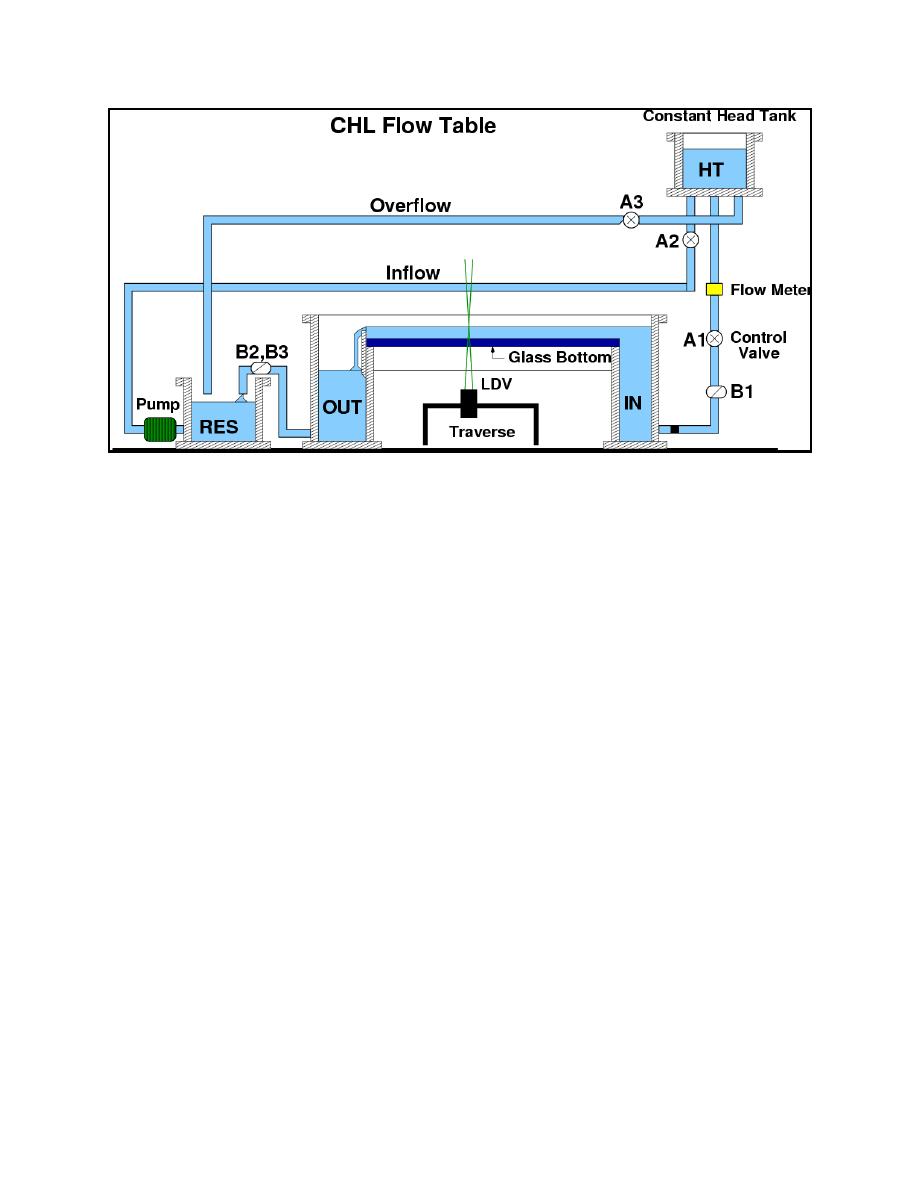
ERDC/CHL CHETN-IV-55
March 2003
Figure 1. Schematic side-view showing flow table components
Velocity measurements using the traversing LDV system require a transparent horizontal bottom so
that the four individual laser beams will have equal refraction and converge at a point. Consequently,
velocity measurements cannot be made if project bathymetry is carved into Plexiglass and placed
over the horizontal glass bottom because the laser beams would not converge to a point. However, a
compromise is possible if the bathymetry is idealized as a series of stepped horizontal surfaces
fabricated of Plexiglass so that it resembles a submerged terrace. Flow quantification for models
incorporating complex 3-D bathymetry must be done using surface-piercing instruments such as
LDV probes, micro-impellers, or time-lapse photography of surface tracers.
SCALING CONSIDERATIONS: Flow table models are much smaller than physical models of
coastal projects typically constructed at CHL. The major consequence of the small size is that most
models of actual projects will be geometrically distorted. This means the horizontal length scale will
be larger than the vertical length scale. In other words, one inch in the horizontal direction in the
model represents a larger distance in the prototype than one inch in the vertical direction represents.
Model distortion allows larger areas to be included in the model while maintaining sufficient water
depths to avoid surface tension effects. Geometric distortion is justified and accepted for flow
models without waves so long as vertical velocities and accelerations are small compared to
horizontal flow velocities. Scaling relationships for geometrically distorted physical models are well
established and widely accepted (e.g., Hughes 1993).
Significant vertical fluid motions might exist in turbulence regions associated with flow separation at
boundaries or solid objects placed in the flow, and this may be the one situation where geometric
distortion could cause similitude problems. In a distorted model, there will be scale effects
associated with four of the nine turbulence terms represented in the Navier-Stokes equations of fluid
motion. Potential scaling impacts increase as the turbulent velocities in the vertical direction
approach the same order of magnitude as the horizontal turbulent fluctuations. However, this
potential scaling limitation is partially overshadowed by the five turbulence terms that are in
similitude.
3



 Previous Page
Previous Page
